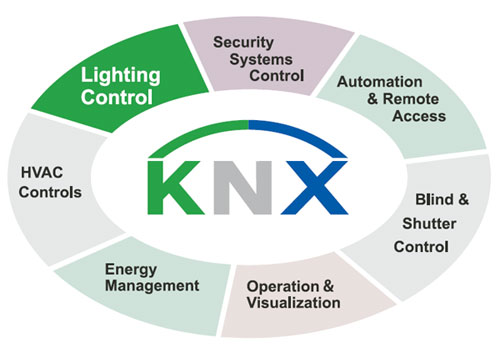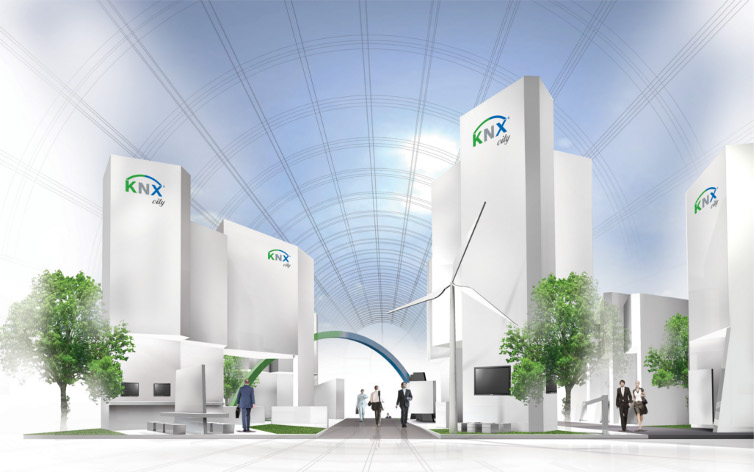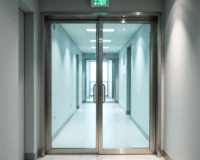As commercial buildings evolve to meet modern demands, automation systems have become essential in enhancing operational efficiency, improving occupant comfort, and optimizing energy usage. Among the various building automation solutions available, KNX technology stands out as a robust, versatile, and widely adopted standard. KNX (ISO/IEC 14543) is renowned for its interoperability, scalability, and flexibility, making it an ideal choice for managing complex commercial environments. This article explores the key benefits of KNX automation for commercial buildings, highlighting how this technology can transform building management and drive significant operational improvements.
Enhanced Energy Efficiency

1. Intelligent Lighting Control
KNX automation enables sophisticated lighting control solutions that significantly reduce energy consumption. By integrating sensors that detect occupancy and ambient light levels, KNX systems can adjust lighting intensity and switch lights on or off based on real-time conditions. For example, in office buildings, KNX can dim or turn off lights in unoccupied areas or adjust lighting levels according to natural daylight, leading to substantial energy savings.
2. Optimized HVAC Management
Heating, ventilation, and air conditioning (HVAC) systems are major energy consumers in commercial buildings. KNX automation provides precise control over HVAC systems by monitoring temperature, humidity, and occupancy levels. KNX can adjust heating and cooling schedules dynamically, ensuring that energy is used only when necessary. For instance, KNX systems can lower temperatures in unoccupied conference rooms or reduce heating in areas with ample sunlight, thereby optimizing energy usage.
3. Real-Time Energy Monitoring
KNX systems offer detailed energy monitoring capabilities, allowing facility managers to track energy consumption across different building areas and systems. By analyzing this data, managers can identify inefficiencies, set benchmarks, and implement strategies to reduce energy usage. This real-time visibility into energy performance is crucial for achieving sustainability goals and reducing operational costs.
Improved Operational Efficiency
1. Centralized Building Management
KNX automation provides a centralized platform for managing various building systems, including lighting, HVAC, security, and shading. This integration streamlines building operations by allowing facility managers to control all systems from a single interface. Centralized management simplifies routine tasks, reduces the likelihood of errors, and enhances overall operational efficiency.
2. Enhanced Maintenance and Diagnostics
With KNX automation, maintenance becomes more proactive and data-driven. The system can generate diagnostic reports and alerts for potential issues, such as equipment malfunctions or performance degradation. By receiving real-time notifications and detailed diagnostic information, maintenance teams can address problems quickly, minimizing downtime and extending the lifespan of equipment.
3. Flexible and Scalable Solutions
KNX technology is highly scalable, making it suitable for buildings of varying sizes and complexities. Whether you’re managing a small office or a large commercial complex, KNX can be customized to meet specific needs. Additionally, KNX systems can be easily expanded or modified to accommodate future changes, such as adding new devices or integrating with other building systems.
Enhanced Occupant Comfort
1. Personalized Environmental Control
KNX automation allows for personalized control of the building environment, enhancing occupant comfort. Tenants and employees can adjust lighting, temperature, and shading settings according to their preferences, creating a more comfortable and productive workspace. For example, in open-plan offices, KNX can provide individual control over desk lighting and localized heating or cooling.
2. Automated Shading Systems
Automated shading systems integrated with KNX technology can adjust blinds, curtains, and shades based on factors such as sunlight intensity and time of day. This not only improves visual comfort by reducing glare but also contributes to energy efficiency by minimizing heat gain or loss. In commercial buildings with large glass facades, automated shading is particularly effective in managing solar heat and daylight.
3. Improved Acoustic Comfort
KNX systems can also contribute to acoustic comfort by managing audiovisual equipment and sound masking systems. For instance, in conference rooms and open-plan areas, KNX can control audio systems to ensure optimal sound quality and minimize distractions. This enhances the overall experience for occupants and supports a productive working environment.
Enhanced Security and Safety
1. Integrated Security Systems
KNX automation integrates various security systems, including alarms, access control, and surveillance cameras, into a unified platform. This integration allows for centralized monitoring and control of security measures, improving response times and enhancing building safety. For example, KNX can automate alarm notifications, lock doors remotely, or trigger video recordings in response to security breaches.
2. Emergency Response and Management
In case of emergencies, KNX systems can automate responses such as activating emergency lighting, opening exit doors, and notifying emergency services. By integrating with fire detection and alarm systems, KNX ensures that emergency protocols are executed promptly, enhancing occupant safety and facilitating efficient evacuation procedures.
3. Access Control and Monitoring
KNX can manage access control systems, allowing for secure and flexible entry management. With features like keycard access, biometric authentication, and remote access control, KNX enhances security by restricting access to authorized personnel only. Additionally, KNX can monitor and log access events, providing valuable insights into building security and access patterns.
Cost Savings and Return on Investment
1. Reduced Energy Costs
The energy-saving features of KNX automation translate into significant cost reductions for commercial buildings. By optimizing lighting, HVAC, and shading systems, KNX helps reduce overall energy consumption, leading to lower utility bills. The real-time energy monitoring capabilities also enable facility managers to identify and address inefficiencies, further enhancing cost savings.
2. Lower Maintenance Costs
KNX’s proactive maintenance and diagnostic capabilities help prevent costly equipment failures and downtime. By addressing potential issues before they escalate, KNX reduces the need for emergency repairs and extends the lifespan of building systems. This results in lower maintenance costs and improved long-term ROI.
3. Increased Property Value
Buildings equipped with KNX automation systems often have higher market value due to their advanced features and energy efficiency. The integration of modern automation technology can make a property more attractive to potential tenants or buyers, leading to increased rental income or resale value.
Future-Proofing Your Building
1. Compatibility with Emerging Technologies
KNX is designed to be compatible with emerging technologies and standards, ensuring that your building remains up-to-date with the latest advancements. As new technologies and protocols are introduced, KNX can integrate with them seamlessly, providing a future-proof solution for building automation.
2. Adaptability to Changing Needs
The flexibility and scalability of KNX technology allow for easy adaptation to changing building requirements. Whether it’s adding new systems, expanding existing functionalities, or integrating with other smart building solutions, KNX can accommodate evolving needs without significant reconfiguration.
3. Support for Sustainable Practices
As sustainability becomes increasingly important, KNX technology supports various green building practices, such as energy-efficient design and renewable energy integration. KNX can help buildings achieve certifications like LEED or BREEAM, demonstrating a commitment to sustainability and enhancing the building’s reputation.
Case Studies: Real-World Applications of KNX Automation
1. Office Buildings
In a large office building, KNX automation can streamline operations by integrating lighting, HVAC, and shading systems into a centralized platform. For example, KNX can automatically adjust lighting and temperature based on occupancy and time of day, optimizing energy use and improving employee comfort.
2. Retail Spaces
Retail environments benefit from KNX automation by providing a dynamic shopping experience and efficient management of store operations. KNX can control lighting and climate to create attractive displays, integrate security systems for loss prevention, and manage energy consumption to reduce operational costs.
3. Hotels
Hotels use KNX automation to enhance guest experiences and streamline operations. KNX can provide personalized room controls for lighting, temperature, and entertainment systems, automate housekeeping notifications, and manage energy use across the property to reduce costs and improve guest satisfaction.
4. Educational Institutions
In educational institutions, KNX technology can manage classroom lighting, HVAC, and audiovisual equipment, creating an optimal learning environment. KNX also supports energy efficiency initiatives and provides centralized control for building management, contributing to overall operational efficiency.
Conclusion
KNX automation offers numerous benefits for commercial buildings, ranging from enhanced energy efficiency and improved operational performance to increased occupant comfort and security. By providing a flexible, scalable, and future-proof solution, KNX technology addresses the diverse needs of modern commercial environments. As building automation continues to advance, KNX remains a leading choice for organizations seeking to optimize their building systems, reduce costs, and enhance overall performance. Embracing KNX automation not only improves the efficiency and functionality of commercial buildings but also positions them for long-term success in an ever-evolving landscape.





